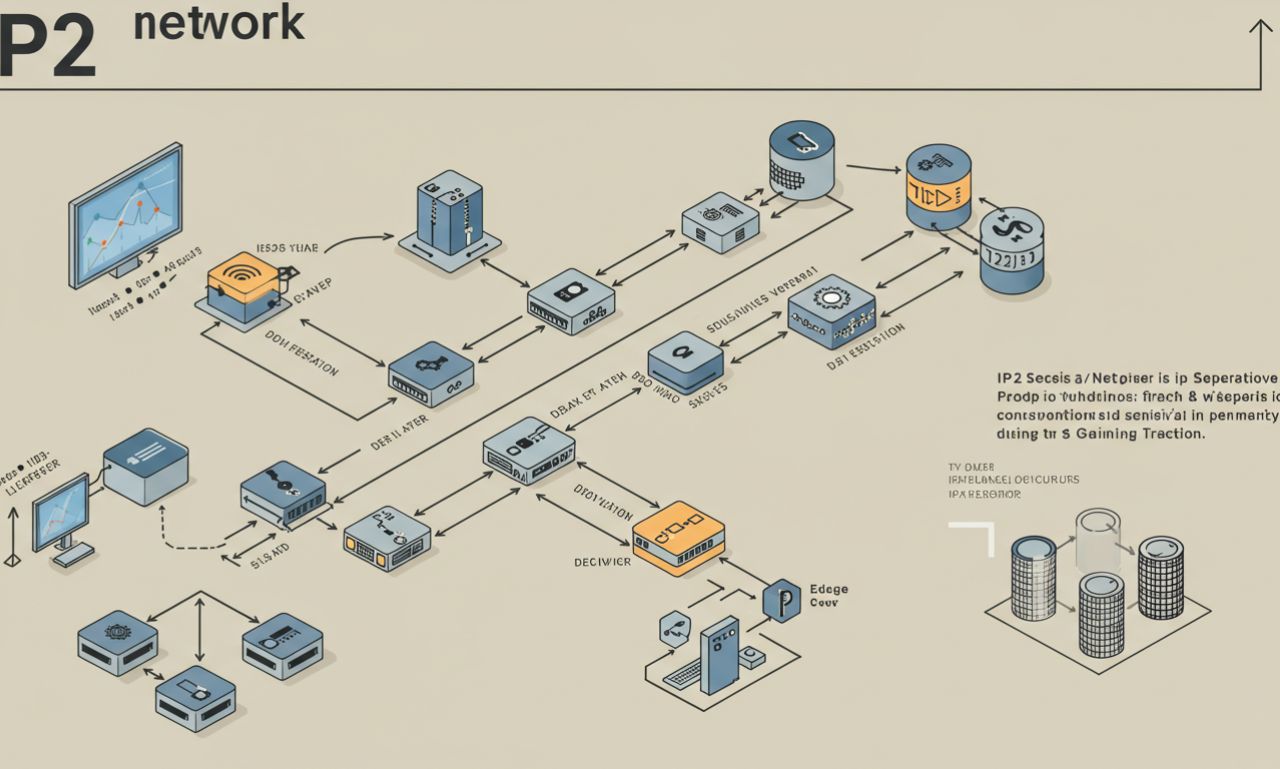In recent years the IP2 Network has emerged as a multi-faceted digital ecosystem combining streaming, content communities, and privacy tools. While precise definitions vary (some overlap with IP intelligence, privacy nets, or streaming networks), the rise of IP2 signals shifting expectations around control, anonymity, and how creators & audiences connect.
IP2 Network: Core Definition & Scope
The IP2 Network refers to a network of streamers and content creators, especially those operating across platforms like YouTube, Twitch, Kick, and DLive, who use the IP2 branding or ecosystem for wider visibility and cross-platform interaction.It also denotes tools and services under the “IP2” name — such as streaming status lists, clip-sharing utilities, and browser add-ons/extensions. Separately, in the “IP intelligence” domain, the term “IP2 network” is used by companies like NetNut to refer to datasets and services that analyze IP addresses for geolocation, risk, fraud detection, carrier (ISP) information, etc.
So, IP2 Network isn’t one single thing. It’s a cluster of related uses: entertainment/streaming, privacy & community, and data-intelligence functions.
IP2 Network: Benefits & Advantages
Here are what people see as strengths & why it’s growing in interest:
-
Cross-Platform Discovery
For streamers, IP2 Network tools help aggregate content from different platforms, making it easier for audiences to keep track of favorites even if they switch streaming services. It helps reduce fragmentation. -
Enhanced IP Intelligence
For businesses, having richer, up-to-date information about an IP address (geolocation, whether a connection is via a VPN or proxy, ISP/ASN info) can help with fraud detection, user verification, compliance (e.g. geo-blocking), and personalized content delivery. -
Privacy & Anonymity
Some usage of IP2 Network tools is geared toward privacy, helping people maintain anonymity online, bypass censorship, or reduce tracking. For users concerned about surveillance, that can be a compelling feature. -
Decentralization & Community
The model used by streaming-community branches is more community-driven, less reliant on centralized gatekeepers. That allows more flexibility for creators, looser moderation in some cases, and stronger fan engagement.
IP2 Network: Challenges & Criticisms
IP2 isn’t perfect. There are several real concerns and trade-offs:
-
Moderation & Content Control
Because many tools or community segments are decentralized, there is inconsistency in what content is allowed. In some cases, controversial content can go unchecked or violate platform rules. -
Security Risks & Misinformation
Where privacy and anonymity are strong, there is risk of misuse (illegal content, disinformation, harassment). IP2 Network services need to ensure strong security itself (for example, encryption, secure server infrastructure) or risk data leaks. -
Reliability & Performance
Aggregation tools (stream lists, clip utilities) depend on third-party platforms. If an upstream platform changes APIs or policies, tools can break. Also, latency or buffering may still hamper live streaming, especially under heavier traffic or weaker connectivity. -
Legal & Regulatory Pressure
Some content or privacy practices may run into law enforcement or copyright issues. Also, new data-protection laws (GDPR, etc.) or platform policies might force certain intermediariees to enforce stricter rules, which may clash with decentralization. -
User Knowledge & Adoption Barriers
Not everyone is tech savvy. Setting up privacy tools properly, using add-ons, handling IP intelligence layers—these can be overwhelming for casual users. Misconfiguration can lead to false sense of security.
Real-World Use & Recent Developments
Here are some of the recent/ongoing trends and real world examples of IP2 Network in action:
-
Browser Add-ons / Extensions are available for IP2.Network to help users engage with content. For example, there is an add-on for Firefox relating to IP2.Network.
-
Streaming Status & Clips Utilities help track whether streamers are live, share memorable moments (clips), even across platforms. These help build community and drive engagement.
-
IP Intelligence Services are being adopted more widely by e-commerce, advertising, cybersecurity sectors. Companies are seeking IP2-type datasets to better manage digital risk.
IP2 Network: Where It Might Go Next
Looking ahead, here are possible paths for the IP2 Network’s evolution:
-
Better Integration with Privacy Standards
As data protection regulations become more stringent, IP2 tools (especially intelligence and anonymity utilities) will likely incorporate stronger compliance, transparency (e.g. audit logs, user control), and possibly open-source components. -
More Robust Streaming Tools
Improved infrastructure to reduce latency, more cross-platform support, better discovery features (search, recommendation), and better moderation tools to deal with misuse or content policies. -
Hybrid Models (Privacy + Monetization)
Creators will look for monetization (subscriptions, tips, paid content), while privacy focused users demand less tracking. Balancing revenue with user trust will be critical. -
Expanding into Global Markets
Regions with stricter censorship or surveillance may adopt IP2-style networks more eagerly; languages, local content, local hosting/nodes may become more important. -
Advances in IP Intelligence
More accurate geolocation (including mobile vs fixed), improved detection of proxies/VPNs/bots, real-time risk scoring, possibly using AI/ML to predict malicious behavior from IP patterns.
How to Get Started with IP2 Network (for Users & Creators)
If you’re interested in trying IP2 Network — either as a viewer, creator, or developer — here are steps and tips:
-
Explore the official IP2.Network or IP2.* domains to see status dashboards, stream listings, and clip utilities.
-
Install the browser add-on or extension (if available), but be cautious: read permissions, updates, and reviews.
-
For privacy/anonymity tools, configure encryption carefully; use peers or nodes if available; avoid revealing identifying info in profiles or streams if anonymity is the goal.
-
For creators: keep aware of content policies on primary platforms (Twitch, YouTube, etc.) — IP2 Network’s tools may link to or from those platforms, so policy violations there can still have real consequences.
-
For businesses using IP intelligence: vet providers for data freshness, accuracy, how they detect VPN/proxies, compliance with privacy/regulation, and API reliability.
Risks & What to Watch For
-
Watch out for fake or untrustworthy IP intelligence providers: stale or inaccurate data can harm business decisions or even legal compliance.
-
Ensure privacy tool claims are real: Open-source vs closed systems; where servers are located; how encryption is implemented.
-
Beware platform policy changes: streaming services can ban certain tools or creators, affecting exposure.
-
Legal risk: content moderation, copyright, misuse of anonymity tools for illicit activity can draw regulator scrutiny.
-
Performance trade-offs: privacy and decentralization sometimes come at cost of speed; heavy encryption or routing through many nodes increases latency.
Conclusion
IP2 Network occupies an interesting position in the digital landscape. It fuses streaming/community tools, privacy/anonymity features, and IP intelligence/data services into a loosely connected ecosystem. Its growth reflects growing demand for alternatives to centralized platforms, higher control over identity and data, and new ways for creators & users to interact.
If well managed, IP2 has potential to contribute positively to internet culture, privacy rights, and decentralized content creation. But it will need to navigate legal, technical, and ethical hurdles: ensuring accuracy, security, moderation, and sustainable business models.

